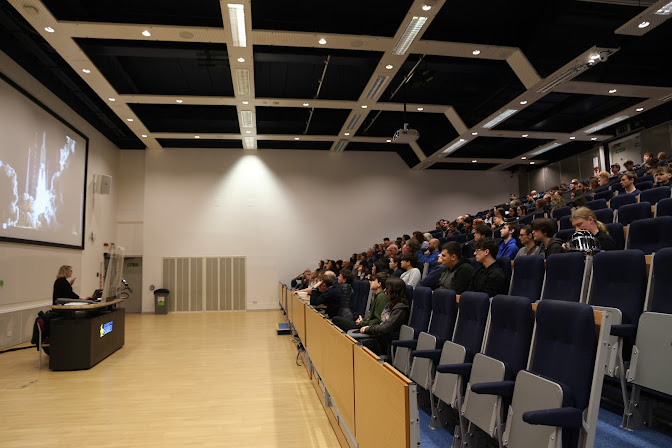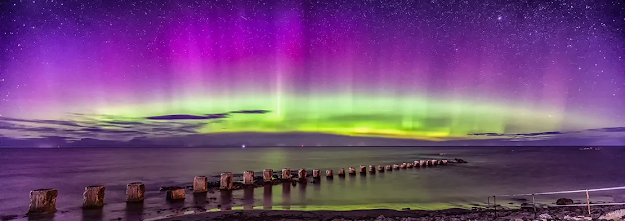The School of Maths & Physics, University of Surrey successfully hosted the 13th Lewis Elton Lecture on Thursday, May 2nd, 2024, at the Austin Pearce 3 (AP3) Lecture Theatre in Guildford. The event, titled "Down to Earth Astronomy: A tour of the radio universe," captivated the audience with a journey through the unseen wonders of the cosmos unveiled by radio waves.
A Warm Welcome and Introduction
The evening commenced with a welcoming address by Professor Jim Al Khalili. He offered a warm introduction to the Lewis Elton lecture series and the esteemed speaker, Dr. Emma Chapman for the evening.
A Glimpse Beyond the Visible with JWST
The session then embarked on a captivating exploration, beginning with a dive into the universe using the James Webb Space Telescope (JWST). The discussion delved into the recent launch of JWST, its intricate structure, and the groundbreaking science it has already yielded. The audience was treated to a visual presentation showcasing JWST's stunning images, including those of Jupiter, a Seyfert galaxy, deep field image of the universe and the breathtaking Carina Nebula.
Shifting Gears: The Power of Radio Astronomy
Following this celestial exploration using infrared light, the lecture transitioned to the unseen realm of radio waves. The speaker expertly contrasted radio astronomy with the capabilities of JWST (operating in the infrared) and Hubble (focusing on the visible spectrum). This highlighted the unique power of radio waves to pierce through dust and gas, revealing hidden aspects of the universe invisible to other telescopes. The inherent differences between radio astronomy and its space-based counterparts were further emphasized. Unlike the cleanroom environments associated with JWST and Hubble, radio astronomy is a grounded endeavor. Radio telescopes, often colossal in size, reside in remote desert locations, demanding a unique approach to research and observation.
A Universe Unveiled: Radio Astronomy vs. Infrared/Visible Light

The lecture then delved deeper into the contrasting capabilities of radio astronomy compared to infrared and visible light observations. Here's a breakdown of the key differences:
- Wavelength: Radio waves have much longer wavelengths compared to infrared and visible light. This allows them to bypass dust and gas clouds that would otherwise obscure our view in the optical and infrared spectrums.
- Penetrating Power: Due to their longer wavelengths, radio waves can penetrate deep into interstellar dust clouds, revealing the hidden nurseries of stars and newborn stellar objects. Visible and infrared light, on the other hand, are often blocked by these clouds.
- Unique Phenomena: Radio astronomy allows us to observe phenomena invisible at other wavelengths. This includes the study of pulsars, the remnants of massive stars, and the detection of neutral hydrogen gas, the most abundant element in the universe.
A Glimpse into the Future: The Square Kilometre Array (SKA)
As the lecture progressed, the discussion shifted towards the future of radio astronomy. The upcoming construction of the Square Kilometre Array (SKA) captured the audience's imagination. The SKA will be a game-changer, poised to be the largest radio telescope ever built. This behemoth will consist of two arrays, one in South Africa and another in Australia, working in tandem to collect radio waves from space.
The Promise of the SKA
The SKA's immense collecting area, spread across vast distances, will provide unprecedented sensitivity and resolution. This will enable astronomers to:- Peer further back in time, potentially observing the very first stars and galaxies that emerged after the Big Bang.
- Study the formation and evolution of galaxies in much greater detail.
- Search for new pulsars and other exotic objects in the universe.
- Hunt for potential signs of extraterrestrial intelligence by looking for techno signatures in radio waves.
The SKA promises to revolutionise our understanding of the universe, and the lecture concluded with a call to action, urging the audience to embrace the possibilities of listening to the universe through this revolutionary instrument.





























